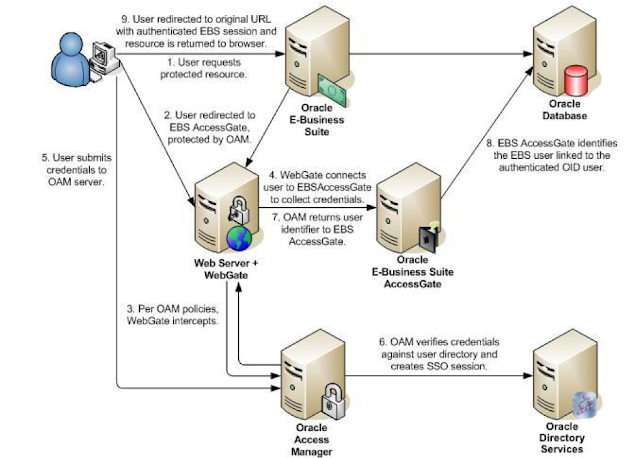1. What are .lct and .ldt files in Patch Directory?
Ans:
The patch metadata LDT files (also called datafiles) are FNDLOAD data files included in the top-level directory of all recent patches. The LDT files contain prerequisite patch information and a manifest of all files in the patch with their version numbers. The Patch Information Bundle metadata also include information about the relationships between patches, such as which minipacks are contained in the recommended.
LCT files (also called configfiles) are the configuration files which are used to download/upload data. Without configfiles, datafiles are useless.
2. If Ad worker fails during Ad patching, How many times by default adpatch automatically tries to resume the patching?
Ans:
Three Times
3. While trying to change one profile option at site level, the option is not editable mode? How to make it editable mode?
Ans:
Goto Application Developer -> Profiles -> Give Profile Options Names -> Check updatable
4. How do you check Compatibility of Oracle Applications with Any operating System?
Ans:
Metalink -> Certify Tab -> View Certification by platform
5. How do you check Latest CPU Patch for Oracle Server and Applications?
Ans:
Metalink -> Patches & Updates Tab
6. In RAC env, Each node contains How many IPs?
Ans:
Three
7. What are the tables updated when you apply application patch?
Ans:
ad_applied_patches and ad_bugs
8. Can you apply Opatch without inventory?
Ans:
No
9. If there is no inventory, How do you apply a opatch?
Ans:
Create inventory using runInstaller
10. What are the tables get created during Apps Patching?
Ans:
ad_deferred_jobs and fnd_installed_processes
11. Default environment variable to be set for Forms Config files?
Ans:
FORMS60_WEB_CONFIG_FILE
12. Profile option to determine which dbc file to use?
Ans:
Application Database ID
13. How do you hide apps password during adpatching?
Ans:
adpatch flags=hidepw
14. What is inter operability patch?
Ans:
OS compatibility patch, mostly applied during upgradation
15. How do you compile jsp files?
Ans:
Using adadmin or ojspCompile(perl -x $JTF_TOP/admin/scripts/ojspCompile.pl)
16. What is cache in Concurrent Managers Definition?
Ans:
No of concurrent requets that have to be cached from fnd_concurrent_requests while reading fnd_concurrent_requests
17. Types of profile options?
Ans:
1. Site level
2. User level
3. Responsibility Level
4. Server Level
5. Application Level
18. Opatch log file location ?
Ans:
$ORACLE_HOME/.patch_storage/patch_number/*.log
19. Different levels of SQL Tracing?
Ans:
Regular (Level 1 – standard/default level)
Level 4 (standard + binds)
Level 8 (standard + waits)
Level 12 (standard + binds and waits)
20. If you lost all redo logs files during DB is up and running? What will happen how do you recover it?
Ans:
DB will get crashed immediately
Solution;
1. You have to go for Incomplete Recovery
2. One way: Take previous backup, recover up to last archive and open the database
3. Second way: open the database in no mount state, create control file with rest logs and open the database with rest logs.
21. DB is up and running fine? you lost one data file? DB is in archive log mode? How do you recover it?
Ans:
1. If you have a backup of datafile, restore it and apply archives.
2. If you don't have backup of datafile, create datafile in database and apply archives.
22. How do you clone a context file or how do you change existing port pool?
Ans:
Using adclonectx.pl, you can clone next context file, during cloning you can give new port pool, and run autoconfig
23. How do you run autoconfig in test mode?
Ans:
adchkcfg.sh (AD_TOP/bin)
24. If you lost dbc file, How will you recover it?
Ans:
Using adgendbc($AD_TOP/bin) or run Autoconfig
Sharing real time knowledge,issues on Oracle Apps DBA and Oracle DBA
Subscribe to:
Post Comments (Atom)
Oracle EBS integration with Oracle IDCS for SSO
Oracle EBS integration with Oracle IDCS for SSO Oracle EBS SSO? Why is it so important? Oracle E-Business Suite is a widely used application...

-
Enabling TLS in Oracle Apps R12.2 Here we would be looking at the detailed steps for Enabling TLS in Oracle Apps R12.2 Introduction: ...
-
Oracle EBS integration with Oracle IDCS for SSO Oracle EBS SSO? Why is it so important? Oracle E-Business Suite is a widely used application...
-
Apps password change routine in Release 12.2 E-Business Suite changed a little bit. We have now extra options to change password, as well ...


No comments:
Post a Comment